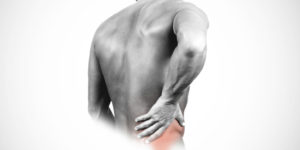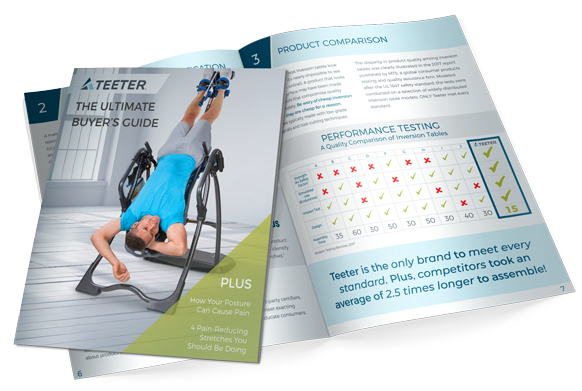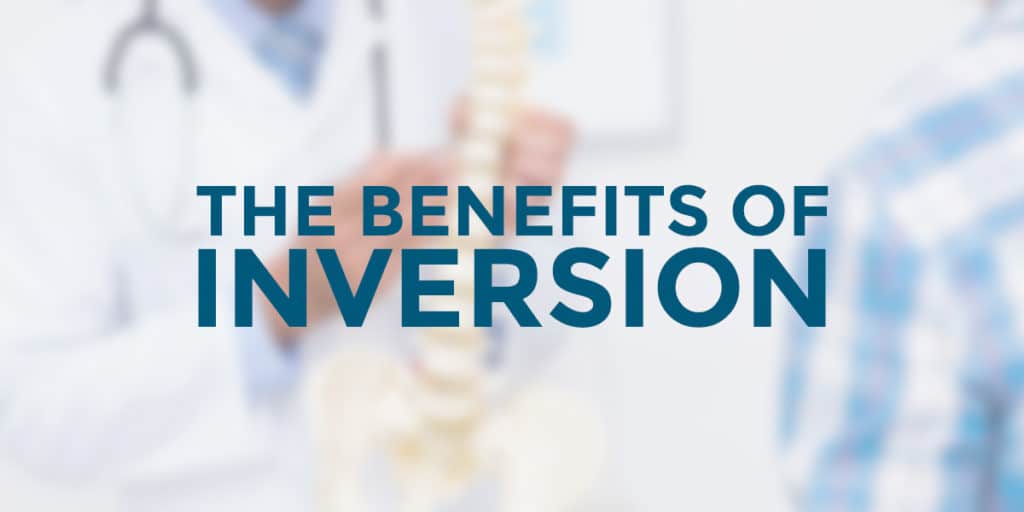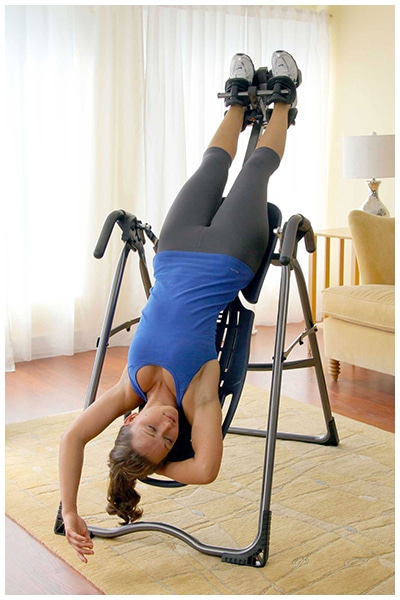Four out of five adults (80% of the population) experience significant lower back pain at some point in their lives, many from a form of low back pain called sciatica. If you have suffered from this painful condition, inversion therapy may be able to help you find relief.
What is Sciatica?

This nerve begins in the spine and drops down the back of each leg, controlling the muscles of the back of the knee and lower leg and providing sensation to parts of the thigh, lower leg, and foot.
Sciatica is not a condition itself, rather a symptom of another medical problem resulting from muscular issues, slipped/herniated discs, degenerative disc disease, spinal stenosis, fractures, or tumors.
What are the Symptoms of Sciatica?
Sciatica pain will vary widely in different people since the conditions causing sciatica and back pain vary as well. Symptoms will range from a dull ache or tingling to pain severe enough to impair movement. Pain, numbness, or weakness will most often occur on one side of your body and may be felt in parts of your leg or hip, back of the calf, or sole of the foot. Sciatica pain may worsen after standing or sitting, at the end of the day, when sneezing or laughing, walking, or bending backward.
Sciatica Relief
There are a lot of Sciatica solutions that run the gamut of more conservative approaches like physical therapy, all the way to surgery. If you are suffering from symptoms of sciatica, consider giving the conservative options a try before committing to the more extreme alternative – some estimate that 80% of sciatica patients with displaced discs get better without surgery.
Undoubtedly, many people are helped by conservative therapies, but it’s hard to say how many and how quickly. Evidence from past clinical trials has been somewhat thin and often contradictory.
However, researchers from Newcastle University in Newcastle Upon Tyne, UK have published results from a preliminary study, identifying inversion therapy as an effective option for sciatica patients needing help avoiding surgery.
The study focused on patients who were told they needed surgery to relieve their sciatic back pain caused by a herniated disc. The patients were divided into two groups: the Conservative group practiced regular physiotherapy on its own, and the Conservative + Teeter group practiced physiotherapy in addition to using a Teeter Inversion Table.
Their results were very encouraging for sciatica patients – those who practiced inversion with a Teeter were 70.5% less likely to require surgery.
Professor David Mendelow, head of Neuroscience at Newcastle University in England, told the London Telegraph that he estimates inversion therapy could save £80 million a year (about $160 million) on unnecessary surgeries in the UK alone.
Keep reading: Benefits of Inversion
Inversion therapy can be experienced in several different forms, most commonly by way of inversion tables, as in this study. Using an inversion table is typically the safest and easiest way to achieve spinal decompression (and relief from sciatica pain) – and can conveniently be done from the comfort of your own home!
In the video below, CEO Rylie Teeter shows you how to target and relieve sciatica pain with a Teeter Inversion Table.
Finding the Best Inversion Table
There are several things one should consider when shopping for an inversion table to ensure effectiveness and user safety.
Third-party certification, like the UL Mark, is one effective way to identify whether an inversion table is of sufficient quality and design. Underwriters Laboratory (UL) offers the only testing specification with specific requirements for the unique operation of an inversion table.
Despite the fact that testing inversion tables to this standard is voluntary, it is a great indicator if a manufacturer is motivated to ensure their customers’ safety by meeting the requirements of real-world use.
With the growing market for inversion tables, there are a wide range of prices and features – yet most inversion tables on the market do not have a UL mark, leaving room to question the risk-factor in using that equipment.
In fact, an engineering evaluation that tested the top five brands against the UL inversion table standards showed that four of the five tested had a catastrophic failure in basic endurance and strength tests.
Only the Teeter inversion table performed without any product failure, and currently is the only brand certificated to UL’s inversion table standard.
*The information provided herein should not be used during any medical emergency or for the diagnosis or treatment of any medical condition. A licensed medical professional should be consulted for diagnosis and treatment of any and all medical conditions.
Free Guide to Back Pain Relief

Why are so many people recommending inversion tables to relieve stubborn back pain? What does hanging upside down do for your body that other methods don't? If you haven't tried inversion therapy for yourself yet, then you probably have a lot of questions.
That's why we created this in-depth guide to give you all the information you need to feel confident in your decision to try an inversion table and experience life without back pain.
"*" indicates required fields
We NEVER sell, rent, or lease our subscription lists. By registering, your information is used subject to Teeter privacy policy and terms.

